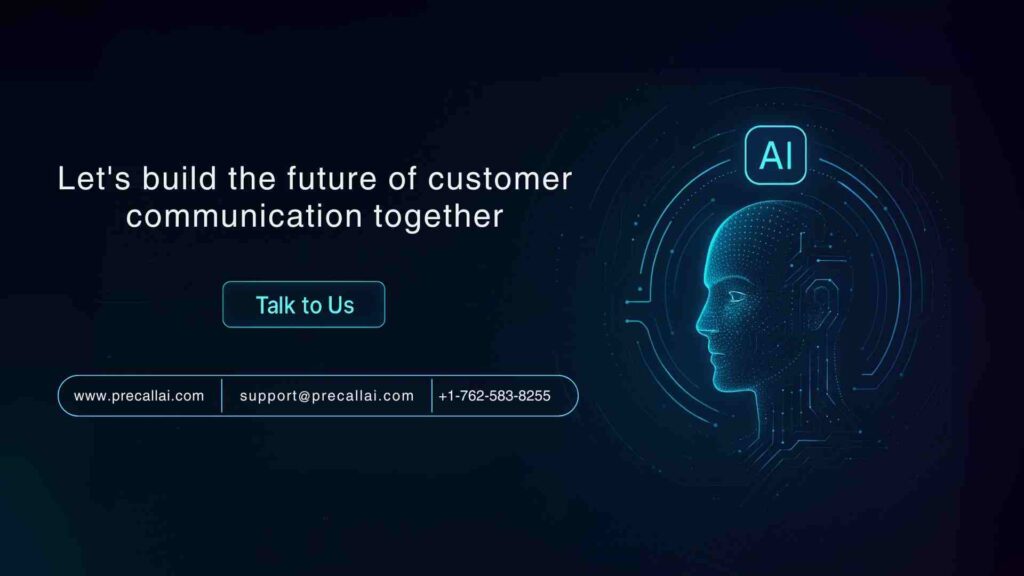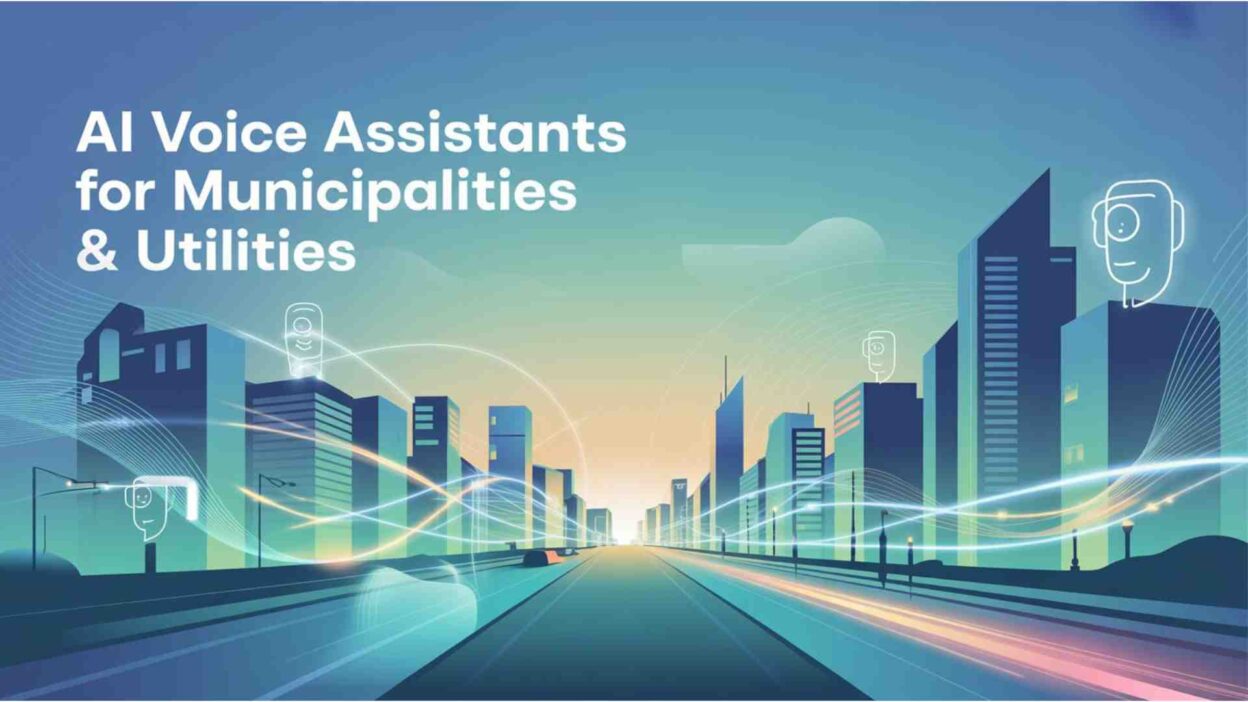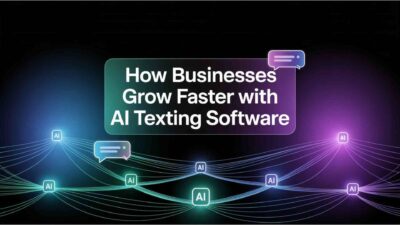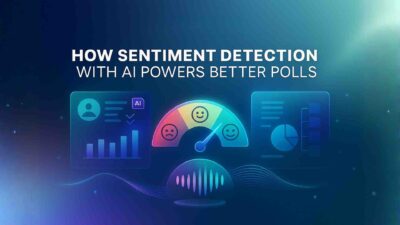TL;DR Public services face mounting pressure today. Citizens demand instant responses. Call volumes overwhelm support teams. Staff shortages create bottlenecks. Budget constraints limit hiring options. Traditional systems fail to meet modern expectations.
Table of Contents
Technology offers powerful solutions now. Voice automation changes how governments operate. Smart systems handle routine inquiries instantly. Citizens get help around the clock. Staff focus on complex issues. Service quality improves dramatically.
AI voice assistants for municipalities & utilities represent the future. These systems understand natural speech patterns. They respond intelligently to questions. Complex queries get routed appropriately. Simple requests resolve immediately. The technology matures rapidly.
Understanding Voice Technology in Public Services
Government agencies serve millions daily. Phone calls flood departments constantly. Email backlogs grow endlessly. Walk-in traffic strains resources. Citizens grow frustrated waiting. Staff members feel overwhelmed.
Voice automation addresses these challenges directly. Intelligent systems answer common questions. Information gets delivered instantly. Wait times disappear completely. Citizens receive consistent service. Satisfaction levels rise.
The technology works remarkably well. Speech recognition interprets spoken words accurately. Natural language processing understands intent clearly. Machine learning improves responses continuously. Integration connects existing databases seamlessly. Everything functions smoothly together.
Current State of Municipal Communication
Most cities rely on outdated methods. Phone trees frustrate callers endlessly. Hold times stretch unreasonably long. Information remains difficult to access. Citizens repeat themselves multiple times. Problems persist unnecessarily.
Staff members answer repetitive questions constantly. Simple inquiries consume valuable time. Complex issues wait in queues. Resources get misallocated regularly. Efficiency suffers substantially.
Digital channels help somewhat. Websites provide basic information. Email systems handle written requests. Mobile apps offer limited functionality. Gaps remain throughout experiences. Citizens deserve better service.
How Voice AI Technology Works
AI voice assistants for municipalities & utilities operate intelligently. The system receives incoming calls automatically. Speech recognition converts words to text. Natural language understanding identifies intent. Knowledge bases provide accurate answers. Responses get delivered naturally.
Complex algorithms power these interactions. Machine learning adapts to patterns. Contextual awareness maintains conversation flow. Sentiment analysis detects frustration levels. Smart routing connects difficult cases. Human agents receive detailed context.
Integration capabilities prove essential. Systems connect to billing databases. Outage maps provide real-time updates. Service request platforms sync perfectly. Payment systems process transactions securely. Everything coordinates seamlessly.
Key Benefits for Government Agencies
Public sector organizations gain tremendously. Service delivery improves across departments. Costs decrease substantially over time. Staff productivity multiplies. Citizens receive better experiences. Communities benefit broadly.
Round-the-Clock Citizen Support
Government offices close. Emergencies happen at midnight. Questions arise in the weekends. Citizens need information constantly. Traditional hours limit accessibility. Service gaps create problems.
AI voice assistants for municipalities & utilities operate continuously. Calls get answered immediately, always. Information stays available perpetually. Time zones become irrelevant. Holidays don’t interrupt service. Citizens have access to help.
Consistency remains constant throughout. Early morning calls receive quality responses. Late-night inquiries get accurate information. Weekend requests resolve quickly. Holiday questions receive proper attention. Service never varies.
Dramatic Cost Reduction
Staffing expenses burden budgets heavily. Salaries consume significant resources. Benefits add substantial costs. Training requires ongoing investment. Turnover creates constant expenses. Financial pressures mount relentlessly.
Voice automation reduces costs dramatically. Initial investments pay back quickly. Operating expenses stay minimal. Scalability costs nearly nothing. Growth doesn’t require proportional spending. Savings accumulate rapidly.
Call center operations shrink appropriately. Fewer agents handle calls. Office space requirements decrease. Equipment needs diminish. Utility costs drop. Budgets stretch.
Enhanced Staff Productivity
Employees waste time on repetitive tasks. Simple questions consume hours daily. Routine requests pile up endlessly. Staff feel unfulfilled constantly. Morale suffers. Talent retention becomes difficult.
AI voice assistants for municipalities & utilities handle routine matters. Staff focus on complex issues. Problem-solving becomes primary work. Expertise is utilized properly. Job satisfaction improves notably. Retention rates increase.
Specialists work more effectively. Engineers address technical problems. Planners develop strategic initiatives. Managers optimize operations. Everyone contributes more meaningfully. Organizational performance improves.
Improved Service Quality
Human agents have limitations naturally. Fatigue affects performance gradually. Stress impacts interactions negatively. Information recall varies considerably. Consistency proves challenging. Mistakes happen inevitably.
Voice AI maintains perfect consistency. Every caller receives accurate information. Responses stay uniform always. Knowledge remains current constantly. Errors decrease to minimal levels. Quality stays reliably high.
Data accuracy improves substantially. Systems access the latest information directly. Updates happen in real-time. Citizens receive correct details. Misinformation disappears completely. Trust builds steadily.
Applications Across Municipal Departments
Every government function potentially benefits. Departments face similar challenges. Citizens need various services. Information requests vary widely. AI voice assistants for municipalities & utilities adapt flexibly.
Water Utility Management
Water departments handle countless calls. Billing questions arrive constantly. Service requests flood lines. Outage reports need immediate attention. Payment inquiries require responses. Volume overwhelms staff regularly.
Voice assistants manage inquiries efficiently. Billing questions are resolved instantly. Account balances are provided immediately. Payment arrangements process automatically. Service requests capture details accurately. Outage information updates continuously.
Leak reporting improves dramatically. Citizens describe locations clearly. Systems log details precisely. Work orders generate automatically. Crews receive accurate information. Response times accelerate.
Electric Power Services
Electrical utilities manage complex operations. Outage calls surge in the storms. Restoration updates demand constant communication. Billing inquiries never stop. Safety concerns require immediate attention. Resources strain under pressure.
AI voice assistants for municipalities & utilities handle volume surges. Outage reports get logged instantly. Affected addresses register automatically. Estimated restoration times were communicated clearly. Updates are broadcast proactively. Citizens stay informed continuously.
Energy usage questions resolve quickly. Consumption patterns are explained clearly. Conservation tips deliver automatically. Program information is shared easily. Rate structures are clarified simply. Understanding improves substantially.
Waste Management Services
Sanitation departments face unique challenges. Collection schedules confuse residents. Holiday changes create questions. Special pickups require coordination. Recycling rules need clarification. Bulk item removal needs scheduling.
Voice technology simplifies everything. Collection dates are provided instantly. Schedule changes are announced proactively. Special pickup requests processed automatically. Recycling guidelines are explained clearly. Confusion disappears completely.
Missed collection reports are captured efficiently. Addresses verify automatically. Service recovery happens quickly. Notifications confirm completion. Satisfaction improves notably. Complaints decrease substantially.
Public Transportation Systems
Transit agencies serve diverse populations. Route information requests flood constantly. Schedule changes need communication. Fare questions require answers. Service disruptions demand updates. Accessibility needs require attention.
AI voice assistants for municipalities & utilities support riders effectively. Route planning happens conversationally. Real-time arrival information is shared instantly. Fare structures are explained clearly. Pass options are described thoroughly. Decisions become easier.
Disruption notifications are broadcast proactively. Alternative routes are suggested automatically. Delay estimates communicate honestly. Service resumption updates promptly. Riders adjust plans. Frustration decreases.
Parks and Recreation
Recreation departments manage busy operations. Program registration creates call spikes. Facility reservations need coordination. Event information requests are constant. Weather updates require communication. Seasonal changes demand attention.
Voice systems handle inquiries smoothly. Program availability checks instantly. Registration processes are automatic. Facility booking confirms immediately. Event details are provided comprehensively. Questions resolve quickly.
Weather-related closures are announced proactively. Cancellations communicate clearly. Refund processes are explained simply. Alternative dates are suggested helpfully. Participants stay informed always. Satisfaction remains high.
Implementation Strategies for Success
Successful deployment requires careful planning. Organizations need clear strategies. Technical considerations matter greatly. Stakeholder buy-in proves essential. Change management requires attention. Success demands commitment.
Assessing Organizational Needs
Each municipality faces unique situations. Call volumes vary. Service types differ substantially. Technical infrastructure varies widely. Budget constraints differ greatly. Assessment must happen thoroughly.
AI voice assistants for municipalities & utilities require customization. Call pattern analysis identifies opportunities. Peak time studies reveal needs. Question categories guide design. Integration requirements get mapped. Priorities become clear.
Stakeholder input proves valuable. Staff members provide insights. Citizens share pain points. Department heads identify needs. Budget officers set constraints. Perspectives inform decisions.
Selecting the Right Technology
Market options abound currently. Vendors offer various capabilities. Pricing models differ substantially. Technical approaches vary widely. Feature sets differ. Selection requires careful evaluation.
Requirements must guide choices. Scalability needs consideration. Integration capabilities matter greatly. Language support proves essential. Customization options enable success. Security requirements stay paramount.
Vendor reputation deserves scrutiny. Experience matters. Municipal references provide insights. Support capabilities prove critical. Long-term viability ensures continuity. Partnerships require trust.
Training and Knowledge Development
AI voice assistants for municipalities & utilities need information. Knowledge bases require development. Common questions need identification. Accurate answers demand verification. Conversational flows need design. Quality content proves essential.
Subject matter experts contribute. Staff members provide expertise. Policies get documented clearly. Procedures are outlined precisely. Edge cases receive attention. Comprehensiveness ensures success.
Testing happens extensively. Sample conversations evaluate performance. Edge cases get stress-tested. Accuracy gets verified thoroughly. Improvements are implemented continuously. Launch readiness gets confirmed.
Integration with Existing Systems
Municipal systems run on various platforms. Legacy databases contain critical information. Payment processors handle transactions. Work order systems manage requests. Customer relationship management tracks interactions. Everything must connect seamlessly.
Technical integration requires expertise. APIs enable data exchange. Middleware coordinates systems. Security protocols protect information. Real-time synchronization ensures accuracy. Performance optimization maintains speed.
Testing validates integrations thoroughly. Data flows verify correctly. Transactions are processed securely. Updates sync accurately. Error handling works properly. Reliability gets confirmed.
Overcoming Implementation Challenges
Obstacles arise in the deployment. Technical hurdles appear regularly. Organizational resistance happens frequently. Budget limitations constrain projects. Timeline pressures create stress. Challenges require solutions.
Addressing Privacy Concerns
Citizens worry about data collection. Personal information needs protection. Conversations contain sensitive details. Regulations mandate compliance. Trust requires earning. Privacy must stay paramount.
AI voice assistants for municipalities & utilities implement strict protections. Encryption secures all communications. Access controls limit data exposure. Retention policies govern storage. Audit trails track access. Compliance gets verified regularly.
Transparency builds confidence. Privacy policies communicate clearly. Data usage is explained honestly. Opt-out options exist. Rights get respected fully. Trust develops gradually.
Managing Change Resistance
Staff members fear job loss. Unions express concerns. Citizens prefer human interaction. Comfort zones resist disruption. Change creates anxiety. Resistance emerges naturally.
Communication addresses concerns directly. Job evolution is explained clearly. Retraining opportunities are present. Success stories are shared widely. The benefits are demonstrated clearly.
Pilot programs prove concepts. Small-scale deployments show value. Results speak convincingly. Expansion happens gradually. Confidence builds steadily. Adoption increases naturally.
Ensuring Accessibility
Diverse populations need accommodation. Language barriers exist widely. Disabilities require consideration. Technology literacy varies substantially. Inclusivity demands attention. Equal access remains essential.
AI voice assistants for municipalities & utilities support multiple languages. Accents get recognized accurately. Speech impediments receive accommodation. Translation happens seamlessly. Everyone gets served effectively. Equity improves.
Alternative channels remain available. Human agents stay accessible. Text options exist. Visual interfaces support. Choices enable comfort. Accessibility becomes universal.
Maintaining Accuracy and Quality
Information changes frequently. Policies are updated regularly. Services evolve continuously. Databases require maintenance. Quality demands vigilance. Accuracy needs constant attention.
Governance processes establish oversight. Content reviews happen regularly. Updates are implemented promptly. Testing validates changes. Performance monitors continuously. Quality stays consistently high.
Feedback mechanisms identify issues. Citizens report problems easily. Staff flags inaccuracies. Analytics reveal patterns. Improvements are implemented quickly. Excellence remains a priority.
Measuring Success and ROI
Investments require justification always. Performance needs measurement. Results demand documentation. The value must be demonstrated clearly. Success requires definition. Metrics matter greatly.
Key Performance Indicators
AI voice assistants for municipalities & utilities generate rich data. Call volumes track precisely. Resolution rates measure effectiveness. Handle times are calculated accurately. Containment rates show automation success. Metrics reveal performance.
Citizen satisfaction surveys capture feedback. Net promoter scores indicate loyalty. Service ratings measure quality. Complaint volumes track problems. Sentiment analysis gauges reactions. Insights guide improvements.
Cost metrics demonstrate value. Per-call costs compare clearly. Staffing expense reductions are calculated. Over time measure decreases. Efficiency gains are quantified. ROI becomes evident.
Continuous Improvement Processes
Data analysis reveals opportunities constantly. Conversation recordings identify gaps. Failed interactions highlight problems. Common questions suggest content needs. Pattern analysis guides optimization. Learning never stops.
Regular reviews assess performance. Monthly metrics track trends. Quarterly analyses identify patterns. Annual evaluations measure progress. Benchmarks compare performance. Standards drive excellence.
Updates are implemented based on findings. Content refreshes regularly. Conversation flows are optimized continuously. Integrations are progressing. Features are added strategically. Evolution happens constantly.
Future Trends in Municipal Voice AI
Technology advances relentlessly. Capabilities expand continuously. Possibilities grow exponentially. AI voice assistants for municipalities & utilities will transform. Innovation accelerates rapidly. The future looks promising.
Advanced Natural Language Understanding
Comprehension improves steadily. Context awareness deepens. Nuance recognition sharpens. Emotional intelligence develops. Conversations become more natural. Understanding approaches human level.
Multi-turn dialogues flow smoothly. Systems remember previous statements. Context carries through interactions. Clarifications happen naturally. Conversations feel genuine. Experiences improve dramatically.
Predictive Service Delivery
Analytics enable anticipation. Patterns reveal needs proactively. AI voice assistants for municipalities & utilities reach out preventively. Problems get addressed. Service becomes truly proactive. Citizen experience transforms.
Outage predictions are notified in advance. Bill spike warnings alert early. Service interruption notices broadcast. Deadline reminders are delivered timely. Proactive communication prevents issues. Satisfaction soars.
Expanded Multi-Channel Integration
Voice represents one channel. Citizens use various platforms. Chat interfaces are gaining popularity. Mobile apps provide convenience. Social media enables engagement. Everything must coordinate.
Omnichannel experiences create consistency. Conversations continue across platforms. Context transfers seamlessly. Preferences get remembered. Interactions personalize. Experiences become unified.
Enhanced Personalization
Systems will learn individual preferences. History informs interactions. Needs are anticipated accurately. Responses are tailored. AI voice assistants for municipalities & utilities become individualized. Personal service scales.
Account information loads automatically. Preferences apply instantly. Communication styles adapt. Language choices remember. Accessibility needs to be accommodated. Everyone receives personalized attention.
Real-World Success Stories
Many municipalities deploy successfully. Results prove impressive. Benefits materialize quickly. Citizens respond positively. Staff embraces technology. Success replicates widely.
Mid-Size City Water Department
A city of 200,000 faced challenges. The call center struggled constantly. Wait times exceeded 15 minutes. Billing questions overwhelmed staff. After-hours needs went unmet. Change became necessary.
AI voice assistants for municipalities & utilities deployed in six months. Call handling increased 300 percent. Wait times dropped to zero. After-hours calls are resolved instantly. Staff morale improved dramatically. Costs decreased 40 percent.
Citizen satisfaction scores jumped. Complaints dropped substantially. Positive feedback increased. Service perception changed. Success exceeded expectations. Other departments took notice.
Regional Electric Utility
A utility serving 500,000 customers struggled. Storm seasons created chaos. Outage calls overwhelmed systems. Updates communicated poorly. Restoration estimates proved inaccurate. Frustration ran high.
Voice automation transformed operations. Outage reports are logged automatically. Updates are broadcast proactively. Estimated restoration times are shared accurately. Call volumes are handled effortlessly. Staff focused on repairs.
Customer satisfaction improved by 60 percent. Complaint volumes dropped 75 percent. Operational efficiency increased substantially. Storm response improved dramatically. The investment paid back in 18 months. Success inspired expansion.
Metropolitan Transit Authority
A transit agency served 2 million riders. Information requests flooded constantly. Schedule changes confused passengers. Service disruptions created chaos. Language barriers challenged. Accessibility needs went unmet.
AI voice assistants for municipalities & utilities launched system-wide. Multilingual support enabled. Real-time information delivered. Accessibility features implemented. Service quality improved. Ridership satisfaction increased.
Call center costs decreased 50 percent. Staff redeployed to field operations. Service quality improved. Rider complaints dropped. Positive feedback increased. The system became a model for others.
Getting Started with Voice AI
Organizations ready to begin need guidance. Steps must sequence properly. Resources require allocation. Timelines need to be established. Success demands planning. Action starts carefully.
Initial Assessment Phase
Current state evaluation happens first. Call volumes are analyzed thoroughly. Question categories identify. Pain points document. Opportunities reveal. Readiness is assessed honestly.
Budget determination follows naturally. Initial cost estimate. Ongoing expenses project. ROI calculations model. Funding sources are identified. Approvals are sought appropriately.
Vendor Selection Process
First, define the requirements clearly. Then, describe the technical specifications in detail. Outline the integration needs. Set the support expectations. Establish the service level agreements. Finally, determine the selection criteria.
We issue requests for proposals broadly, evaluate vendor responses carefully and observe demonstrations closely. Then check references thoroughly, verify capabilities and make the selection confidently.
Pilot Program Launch
Small-scale deployment tests viability. The single department starts first. Limited functionality proves the concept. Feedback is collected actively. Adjustments are implemented quickly. Success validates the approach.
AI voice assistants for municipalities & utilities expand gradually. Additional departments join. Features are added progressively. Scale increases steadily. Confidence builds continuously. Full deployment plans.
Read More: How to Integrate SaaS with Your Existing Business Apps
Conclusion

Municipal services face unprecedented challenges today. Citizens demand a more responsive government. Budget constraints limit traditional solutions. Staff shortages create service gaps. Technology offers powerful answers. Voice automation transforms possibilities. AI voice assistants for municipalities & utilities deliver remarkable benefits. Service availability extends to 24/7 operation.
Real-world deployments prove effectiveness clearly. Water departments serve citizens better. Electric utilities manage outages efficiently. Transit agencies inform riders accurately. Parks departments coordinate activities smoothly. Every function improves. The technology continues to advance rapidly. Natural language understanding deepens constantly. Predictive capabilities develop progressively. Personalization becomes more sophisticated. Integration expands continuously. Possibilities grow exponentially.
Smart municipalities act decisively now. They assess needs carefully, select partners wisely, implement thoughtfully. Measure rigorously and improve continuously. The future of public service arrives today. Voice automation leads the way. Citizens receive better experiences. Staff work more effectively. Budgets stretch. Communities thrive.
AI voice assistants for municipalities & utilities represent. They symbolize commitment to excellence, demonstrate innovation, show responsiveness. Prove accountability and deliver results. Organizations ready to transform should start immediately. Assessment costs nothing. Planning requires time only. Pilot programs prove affordable. Success validates investment. Benefits compound quickly.






[…] Read More: AI Voice Assistants for Municipalities & Utilities […]
[…] Read More: AI Voice Assistants for Municipalities & Utilities […]
[…] Read More: AI Voice Assistants for Municipalities & Utilities […]